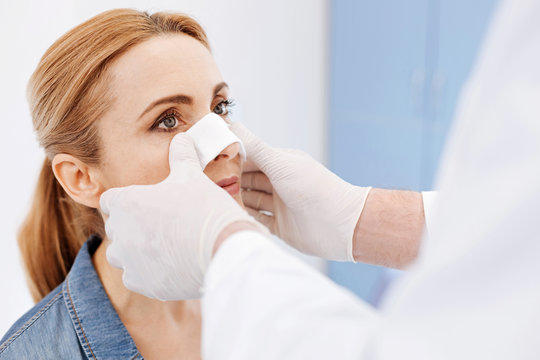Rhinoplasty surgery ion riyadh, a transformative surgical procedure for the nose, is a significant investment in both appearance and self-confidence. While the surgery itself is a critical step, the recovery and aftercare process in Riyadh is equally vital for achieving optimal results and ensuring a smooth, healthy healing journey. Understanding what to expect during this period and diligently following your surgeon's instructions are paramount for success.

Immediate Post-Operative Period (Day 1 - Week 1):
The first few days after rhinoplasty are typically when the most noticeable effects of the surgery are present.
- Splint and Packing: You will likely have a splint (either internal or external, or both) placed on or inside your nose to maintain its new shape and provide support. In some cases, light nasal packing may also be used internally to absorb drainage and provide additional support, though many modern surgeons minimize its use.
- Swelling and Bruising: Expect significant swelling around the nose and under the eyes. Bruising, often appearing as "black eyes," is common. This typically peaks within the first 48-72 hours.
- Discomfort: You may experience mild to moderate discomfort, congestion, or a dull headache. Your surgeon in Riyadh will prescribe pain medication to manage this.
- Head Elevation: It is crucial to keep your head elevated at all times, even while sleeping, for at least the first week (and ideally longer). Using several pillows or sleeping in a recliner helps to minimize swelling and reduce pressure on the healing nose.
- Cold Compresses: Applying cold compresses around your eyes and cheeks (avoiding direct contact with the nasal splint) for the first 48 hours can significantly help reduce swelling and bruising.
- Avoid Blowing Nose: This is one of the most critical instructions. Blowing your nose can dislodge internal sutures, cause bleeding, or shift the nasal bones. If you need to sneeze, try to do so with your mouth open to reduce pressure on the nose. Your surgeon may recommend a gentle saline nasal spray to keep the passages moist.
- Rest: Prioritize rest. Your body needs energy to heal, so avoid any strenuous activities, bending, or lifting heavy objects.
- Diet and Hydration: Stick to a soft, bland diet initially and stay well-hydrated. Avoid very hot or spicy foods as they can increase swelling.
- Medication: Take all prescribed medications (antibiotics, pain relievers) exactly as directed by your Riyadh surgeon. Avoid over-the-counter anti-inflammatory medications like ibuprofen unless specifically approved, as they can increase bleeding.
Early Recovery (Week 2 - Month 1):
By the second week, you'll start to see significant improvements, and your surgeon will typically remove the external splint and any sutures.
- Splint Removal: This is a major milestone. While still swollen, you will begin to see the initial contours of your new nose.
- Bruising Fades: Most visible bruising around the eyes should have faded significantly or completely resolved.
- Decreased Swelling: While the majority of visible swelling will have subsided, some residual swelling, particularly at the nasal tip, will remain. This can last for several months.
- Return to Activities: Most patients can return to light work or daily activities after 7-10 days, provided their job isn't physically demanding. Avoid strenuous exercise for at least 3-4 weeks.
- Glasses and Sun Protection: Avoid wearing glasses that rest on the bridge of your nose for at least 4-6 weeks, as they can put pressure on the healing bones. Your surgeon may recommend taping them to your forehead or using contacts. Protect your nose from direct sun exposure, as it can cause discoloration and prolong swelling.
Long-Term Recovery (Month 1 - Year 1+):
The full results of rhinoplasty are a gradual process.
- Continued Refinement: Your nose will continue to refine its shape over several months as subtle swelling dissipates. The nasal tip is often the last area for swelling to fully resolve, sometimes taking up to a year or even longer.
- Follow-Up Appointments: Regular follow-up appointments with your Riyadh surgeon are crucial during this period. They will monitor your healing progress, address any concerns, and provide further guidance on care. Many clinics in Riyadh offer comprehensive post-operative care plans, sometimes extending for a full year.
- Listen to Your Body: Pay attention to how your nose feels. If you experience unusual pain, excessive swelling, or any signs of infection (redness, warmth, pus), contact your surgeon immediately.
- Patience is Key: The most important aspect of rhinoplasty recovery is patience. The final result will reveal itself gradually. Trust your surgeon's expertise and follow their advice meticulously.
By diligently adhering to post-operative instructions and attending all follow-up appointments with your chosen rhinoplasty specialist in Riyadh, you can significantly contribute to a smooth recovery and ensure the best possible aesthetic and functional outcomes from your surgery.




Comments